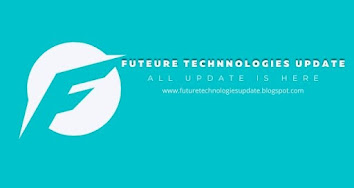Summary
As an important part of the energy Internet, the demand-side smart energy
systems are an important organizational form of future energy systems. It
is of great significance for realizing distributed local consumption of
renewable energy and improving the efficiency of terminal energy utilization.
This paper discusses the compositional characteristics of the demand-side smart
energy system, lists the key equipment and technologies related to the energy
production, transmission, distribution, conversion, storage, consumption, and
other links of the demand-side smart energy system, and analyzes the industry
of the demand-side smart energy system. Development model. Finally, further
aiming at the development prospect of the demand-side smart energy system, it
is expounded in the experimental demonstration stage, application promotion
stage, general application, and complete marketization stage.
 |
| Energy Systems |
1.
Introduction
Energy is the basis for the survival of human society. Since fossil fuels
such as petroleum and coal are non-renewable energy sources and will cause
environmental pollution during their use, improving energy efficiency and
increasing the use of renewable energy has become a solution to current energy
problems and the inevitable choice for environmental problems. Breaking the
operation mode of separate design and separate operation among various energy
systems, carrying out unified optimal design, coordinated and optimal operation
of different energy systems, and building a unified energy system is an
effective means to promote the reform of the energy field and solve energy
problems.
In the national "13th Five-Year" energy planning work symposium,
it was emphasized that during the "13th Five-Year Plan" period,
efforts should be made to promote the optimization of the energy system,
implement the improvement of power and natural gas peak shaving capabilities,
the development of distributed energy and smart grids, and the "Internet +
Wisdom" "Energy" and other action plans to significantly improve
the intelligence level and operational efficiency of the energy system. In
April 2015, the National Energy Administration organized an Energy Internet
Conference and proposed to formulate an "Energy Internet Action
Plan". Relevant domestic research institutions and manufacturers are
stepping up to explore the research and practice of smart energy systems or
energy Internet technologies, and have achieved a series of results.
2.
Characteristics of demand-side smart energy systems
The demand-side smart energy system belongs to the local energy system,
which is an integrated system of energy production, supply, and marketing
formed by organically coordinating and optimizing the production, transmission,
distribution, conversion, storage, consumption, and other links of regional or
user energy. It is a new type of energy system that interconnects multiple
energy sources. It realizes the physical connection and interaction of various
energy sources such as electricity, heat, cold, and air through various energy
converters. It is a highly coupled energy resource utilization and energy
Circulatory system.
Specifically: â‘ The regional smart energy system is composed of
a regional smart power distribution system, medium, and low voltage natural gas
system, heating/cooling/water system, and other energy supply networks coupled
and interconnected, which play a role in energy transmission, distribution,
conversion, and balance. There is a strong coupling relationship between the
energy systems;
â‘¡ The user-level smart energy system is composed of the user's intelligent
power consumption system, distributed/central heating system, water supply system,
energy storage system, etc., and different types of energy There is a deep
coupling relationship between them. User-level smart energy systems can also be
called micro-energy grids, and regional-level smart energy systems can contain
numerous micro-energy grids.
 |
| Energy Systems |
3.
Industrial development model
In recent years, the Chinese government has been increasing its emphasis on
and support to the energy sector, and vigorously advocates the establishment of
an integrated smart energy system with renewable energy as the mainstay on the
demand side. In terms of management methods, following the Internet concept,
advanced Internet information technology is used to realize the
intelligentization of energy production and use, and the rapid development of
related industries is embodied in the following aspects.
(1)Energy
structure
The energy supply link will gradually have the characteristics of green
environmental protection, economical efficiency, safety, and reliability [22,
23], a diversified energy structure, and a multi-wheel-driven energy supply
system; distributed energy will develop rapidly. Rooftop photovoltaic, electric
vehicles, and other distributed resources with a small single capacity and a
large overall number are geographically dispersed. A demand-side smart energy
system that can collect, store and utilize these resources locally is an
efficient and convenient way to utilize these resources. Effective way.
(2)
Technical attributes
The management mode of information technology and informatization will
continue to deepen and develop in the demand-side smart energy system. This
includes two meanings: First, information technology is the premise to realize
the smart energy system. To deepen the development of information technology, a
large number and wide application of various sensors such as current, voltage,
air pressure, flow, temperature, and embedded data collectors are the
foundation, real-time and reliable communication networks are the medium, and
efficient and intelligent control algorithms are the core. Only on this basis
can the smart energy system effectively integrate energy production data,
operation data, user demand data, market data, and other types of data to
achieve the goal of optimal energy utilization. Secondly, the "information
management" mode of energy is an effective way for smart energy systems to
balance supply and demand in real-time and optimize energy applications. For
example, to cope with the intermittent and random nature of distributed power
generation and various loads in the energy production and use links, energy
storage devices are key energy buffer units. From the perspective of
information theory, the introduction of energy storage transforms energy from a
continuous amount to a discrete amount during the deployment process. This
transformation enables the smart energy system to dispatch the discrete energy
flow according to the mechanism of information Internet management and control
of information flow.
(3) Market
form
The technology of related industries will enable the business model to
achieve breakthroughs and innovations. Model innovations with more
participants, lower barriers to entry, and more flexible methods will continue
to emerge. Using the Internet as a carrier can closely link decentralized
users, differentiated energy sources, and diversified business entities in the
energy system, expand the scope and frequency of interactions among market
members, reduce transaction costs, and significantly increase market members'
participation in energy transactions. Convenience and presence. The integration
of various energy forms and the penetration of the Internet spirit will surely
give birth to a new energy system ecology with full competition, multilateral
reciprocity, and active participation. Innovate the business model of the
demand-side smart energy system, encourage the establishment of comprehensive
energy service companies through holding or equity participation in the power
grid, gas, and heating companies to engage in market-oriented energy supply and
sales, and actively promote market-oriented energy management contracts and
comprehensive energy-saving services. mechanism[28~30], to accelerate the
construction of an Internet-based smart energy use information service
platform, which can provide users with open, shared flexible, and intelligent
comprehensive energy supply and value-added services.
 |
| Energy Systems |
4.
Development prospects
It is expected that by 2030, the related technologies and applications of
smart energy systems will be basically mature and fully commercialized. Its
development route is as follows:
Experimental demonstration stage. At present, most of the technologies
related to smart energy systems are in the initial stage of exploration and are
gradually transforming into practical applications. Various simulation
experiment systems and demonstration projects have been initially established.
With the further development of related research on smart energy systems, the
demonstration of smart energy system engineering has gradually matured and
begun to be promoted to society. At this stage, the key technologies of smart
energy systems are gradually mature and can be applied to some actual
commercialized projects. Companies in the market have a broad grasp of key core
technologies, reducing technical barriers. The state and government still need
to make an initial investment or related subsidies for projects to stimulate
market investors to invest and operate in smart energy systems.
Application promotion stage. From 2020 to 2025, it is the stage of vigorous
development of the marketization of my country's demand-side smart energy
system. At this stage, the core technologies of equipment manufacturing,
optimal control, planning, and design of the smart energy system have gradually
matured, which can meet the needs of actual projects, and various technologies
have been well verified and utilized in actual projects. The state's policies
for promoting the development of smart energy systems have been relatively complete,
and the market vitality has increased. More efforts should be made to encourage
and develop contract energy management and self-use smart energy systems.
Universal application and complete marketization stage. From 2025 to 2030,
the key technology research and development of demand-side smart energy systems
are mature, and my country's smart energy systems are highly market-oriented.
In addition to energy supply companies, a large number of independent operators
and even individuals choose to invest in regional and user-level smart energy
systems. The price adjustment can already be based on cost pricing, the price
is reasonable and the competition is sufficient, and the demand-side smart
energy system has become an energy supply model widely adopted by the whole
society.
 |
| Energy Systems |
5.
Conclusion
The smart energy system represents the development direction of the future
energy field and is the basis for the development of the energy Internet.
Related technologies have become the focus of attention in the energy field of
all countries in the world. This paper mainly analyzes and discusses the
characteristics, key technologies, industrial development models, and
development prospects of demand-side smart energy systems. With the rapid
development of key equipment and new technologies such as energy storage,
conversion, and transmission, the smart energy system can significantly improve
the comprehensive energy utilization efficiency and renewable energy
consumption capacity through multi-energy complementary integration and cascade
utilization, and improve the level of asset utilization. The flexibility of
energy supply, changing energy production and consumption patterns, and driving
the development of many emerging energy markets and related industries, will
become the key to realizing my country's energy transformation, energy
conservation, emission reduction, and sustainable development goals.












No comments:
Post a Comment